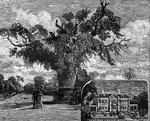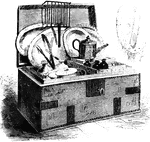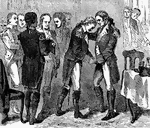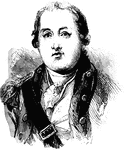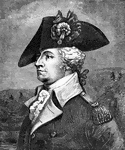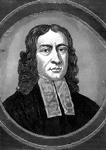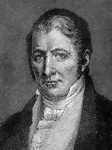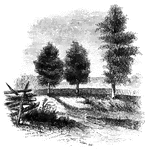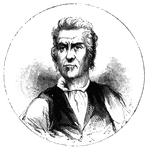
George Washington Crossing the Delaware
An illustration of George Washington crossing the Delaware River on December 25, 1776. This event occurred…

Washington Crossing the Delaware
The first move in a surprise attack against the Hessian forces at the Battle of Trenton.

Washington Elm
"The Washington Elm. The horse seen in this sketch is one of the oldest in Cambridge, having been built…
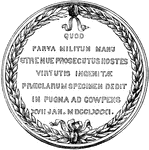
Washington Medal Back
"Silver medal awarded to Washington. The following are the device and inscriptions on the back: Quod…

Washington Medal Front
"Silver medal awarded to Washington. The following are the device and inscriptions on the front: An…

Washington Monument
"Washington Monument. The following are the inscriptions on the monument: East front: 'To George Washington,…

Washington Resigning His Commission
At Fraunces Tavern on December 4, Washington formally bade his officers farewell and on December 23,…

Washington Taking Command
This illustration shows George Washington taking command of his troups during the American Revolution.

Washington's Bier
"The bier which Washington was carried to the tomb at Mount Vernon."—Lossing, 1851

Washington's head-quarters
"Washington's head-quarters. This view is from the Reading rail-road, looking east, and includes a portion…
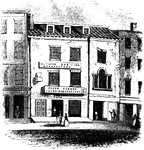
Washington's Head-Quarters
"Washington's head-quarters. I was informed by the venerable Anna van Antwerp, about a fortnight before…
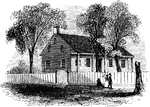
Washington's Head-Quarters
"Washington's head-quarters. The house occupied by Washington while the army was at White Plains is…

Washington's Headquarters at Newburg
The headquarters of George Washington at Newburg during the Revolutionary War.

Washington's Quarters
"Washington's Quarters. This is a view of the southwest front of the mansion. The room occupied by Washington…
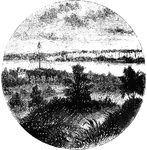
Fort Washington
"View at Fort Washington. This is a view from the site of the interior works at Fort Washington from…

Fort Watson
"Site of Fort Watson."—Lossing, 1851 The Siege of Fort Watson was an American Revolutionary War confrontation…
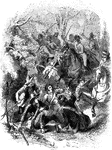
Battle of Waxhaws
A battle of the American Revolution in 1780. Led by Abraham Buford, the men of the Continental Army…
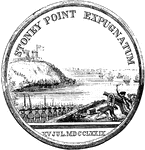
Wayne Medal Back
"Gold medal awarded by Congress to General Wayne. This is a representation of the medal, the size of…
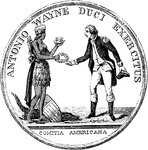
Wayne Medal Front
"Gold medal awarded by Congress to General Wayne. This is a representation of the medal, the size of…
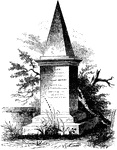
Wayne's Monument
General Anthony Wayne's monument at St. David's Episcopal Church, Radnor, Pennsylvania.
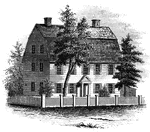
Webb House
The Webb House. This house is still standing (1848), in the central part of Wethersfield, a few rods…

West Point
"West Point in 1780. This view is from a print published in the New York Magazine for 1790.…

Benjamin West
A famous painter of historical scenes around and after the time of the American Revolution.
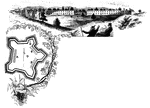
Western Line of Barracks
Western line of barracks. There were four large buildings used for barracks within the fort, the walls…
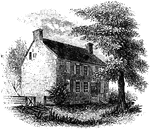
Whitall's House at Red Bank
"South of the fort a short distance was a brick house with 'I.A.W. 1748' on one of the gables, the initials…
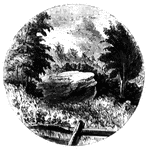
William's Rock
William's Rock. This view is taken from the road, looking northward. In the distance is seen the highest…
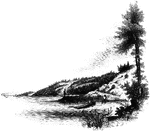
Williams landing-place
"Landing-place of Roger Williams. This view is on the left bank of the Seekonk, looking south. The point…
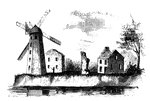
Wind-Mill Point
Wind-mill Point. This view was sketched from the steam-boat, when a little below the wind-mill, looking…
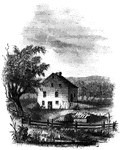
Wintermoot's Fort
Site of Wintermoot's Fort. This view is from the ancient bed of the Susquehanna, looking west. The building,…
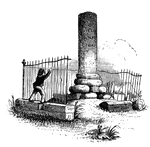
Wolfe's Monument
Wolfe's Monument. Since 1848, the remains of this monument have been removed, and a column forty feet…
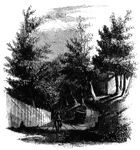
Wolfe's Ravine
Wolfe's Ravine. This scene is about half way up the ravine from Wolfe's Cove, looking down the road,…
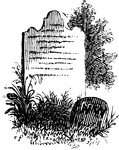
Woodhull's Grave
"Woodhull's Grave. Nathaniel Woodhull was born at Mastic, Long Island, December 30, 1722. Agriculture…
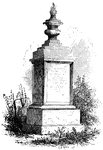
Woodhull's Monument
"Woodhull's Monument. This monument stands on the south side of the church. It is of white marble, about…

The Shot that is Heard Around the World
A phrase that refers to the first shot fired against the British in the American Revolution, during…
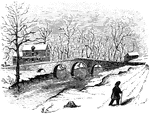
Worth's Mills
"Bridge at Worth's Mill's. This substantial stone bridge, over Stony Brook, is upon the site of the…
![The Yeoman House. This view is from the road, looking north. An attempt was made by a soldier to burn the house, but so rapid was the march of the invaders that the flames had made but little progress before the troops were far on their road to the village. An [African American] woman, who was concealed under some corn-stalks near, extinguished the flames. The house is about half a mile from the river, on the right side of the road from the landing to Kingston village.](https://etc.usf.edu/clipart/13500/13510/yeoman_13510_mth.gif)
Yeoman House
The Yeoman House. This view is from the road, looking north. An attempt was made by a soldier to burn…

Siege of Yorktown
Battle of Yorktown. One of the major battles between the British and Americans. It took place in Virginia…
